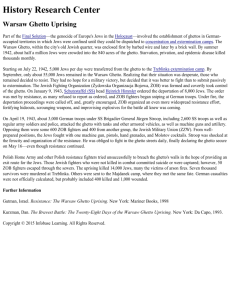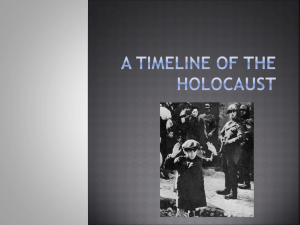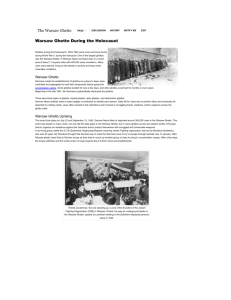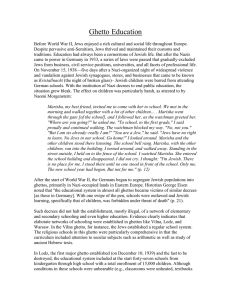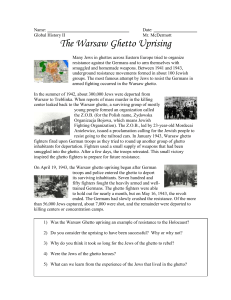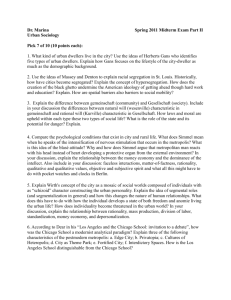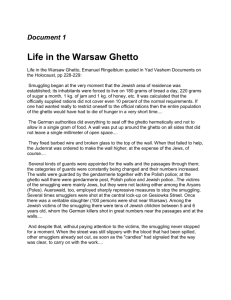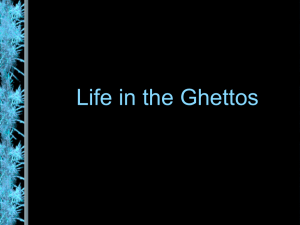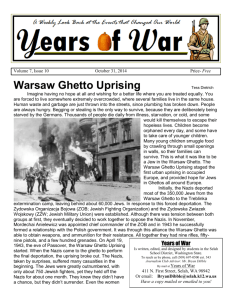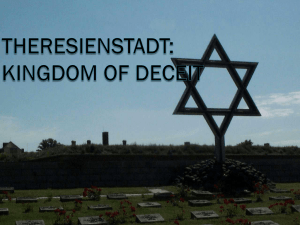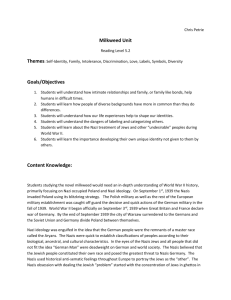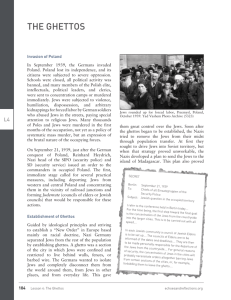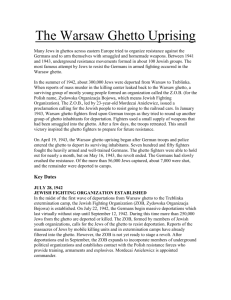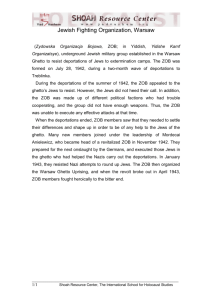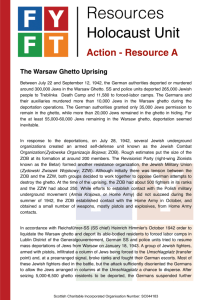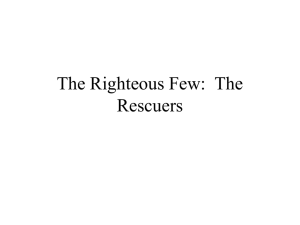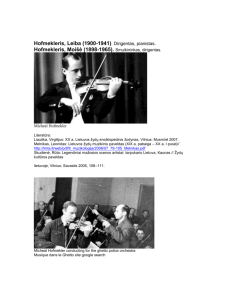Ghettos Then and Now Powerpoint
advertisement
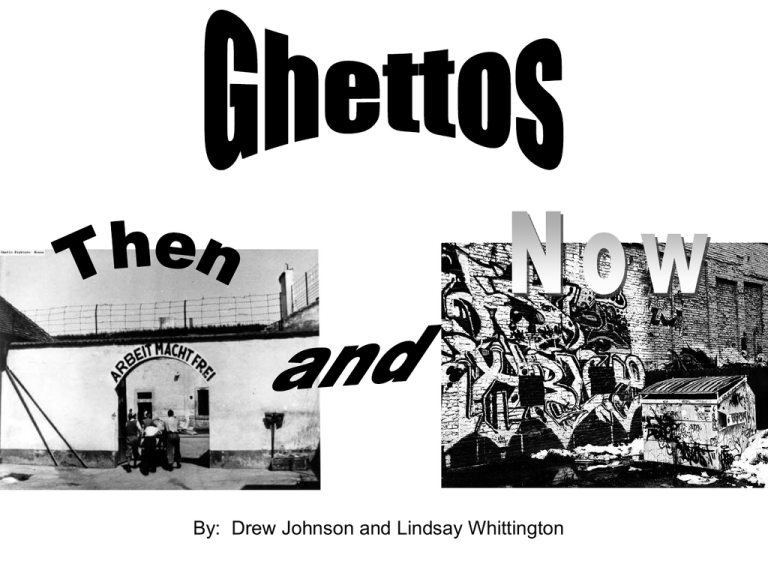
By: Drew Johnson and Lindsay Whittington Definition The word ghetto derived from an island in Venice called Ghetto where Jews were made to live in the 1600s. During the Holocaust, Jews were forced to live in Ghettos after being kicked out of their own homes. Definition Today, the word ghetto is used loosely. It can mean anything from someone who fulfills the black stereotype of being loud and obnoxious, something gaudy, or a poor neighborhood. This is a map of all the ghettos Jews were forced to live in during the Holocaust. This is the entrance to a concentration camp in Europe. •In “closed” ghettos, Jewish parents often had to send their children sneaking off in the middle of the night to get them to find some food. •Even when they did find food, they often didn’t find near enough to feed their whole families. •The same problem arises nowadays, except that parents are willing to go to more extremes such as robbing a store or bank to get money for food. •Here modern day ghetto resident are being rounded up because of choices they made, unlike the Jews. •Here Jews are unknowingly being transported to the ghetto. •The sad truth is that they won’t even know what is going on until it is to late to stop. •After the beginning of World War II, Nazis began ordering all Jews to live within certain, very specific, areas of big cities, called ghettos. •To get them to cooperate, the Nazis told the Jews they were being transported to another place for labor. •A few of the major ghettos were located in the cities of Kovno, Lodz, Minsk, Vilna, and Warsaw. •445,000 Jews were living in the ghetto in Warsaw, and conditions deteriorated rapidly. •Ghettos had narrow streets and tall, crowded houses. •Some ghettos started out as "open“, which meant that Jews could leave the area during the daytime but often had to be back within the ghetto by a curfew. Later, all ghettos became "closed," which meant that Jews were trapped within the confines of the ghetto and not allowed to leave. •The largest ghetto was in Warsaw, with its highest population reaching 445,000 in March 1941. •When the Nazis decided to kill the remaining Jews in a ghetto, they would "liquidate" a ghetto by boarding the last Jews in the ghetto on trains. When the Nazis attempted to liquidate the Warsaw Ghetto on April 13, 1943, the remaining Jews fought back in what has become known as the Warsaw Ghetto Uprising. The Jewish resistance fighters held out against the entire Nazi regime for 28 days, longer than many European countries had been able to withstand Nazi conquest.

